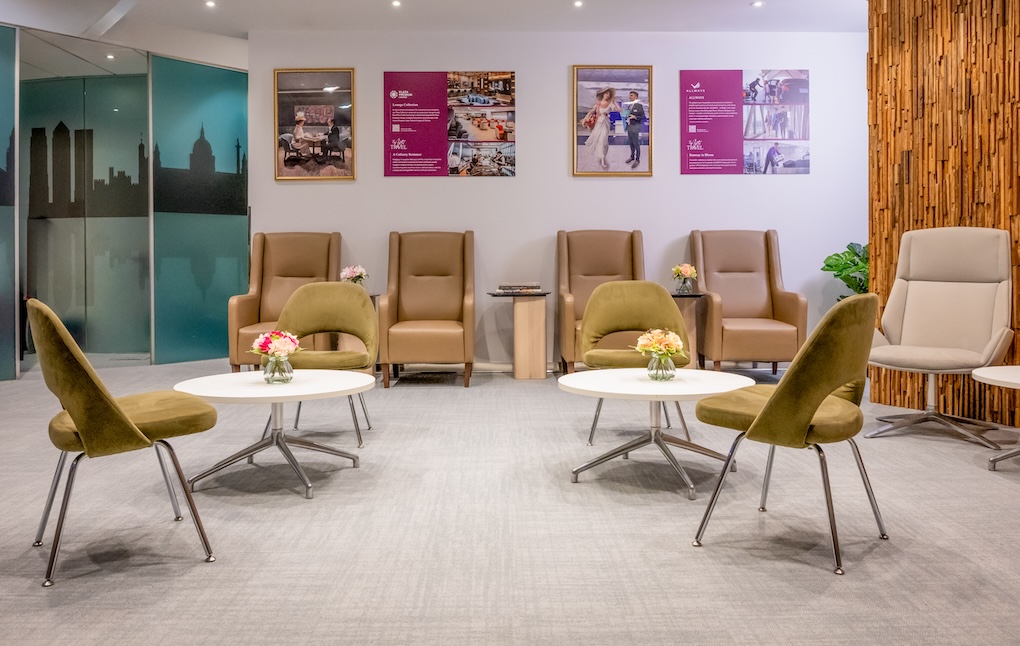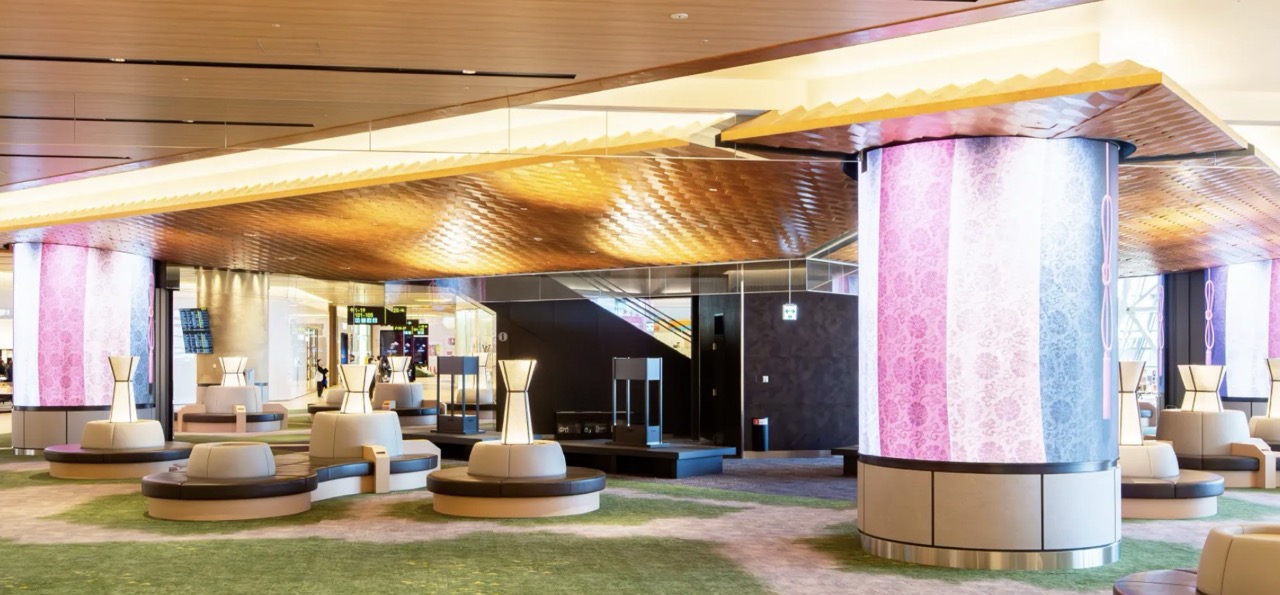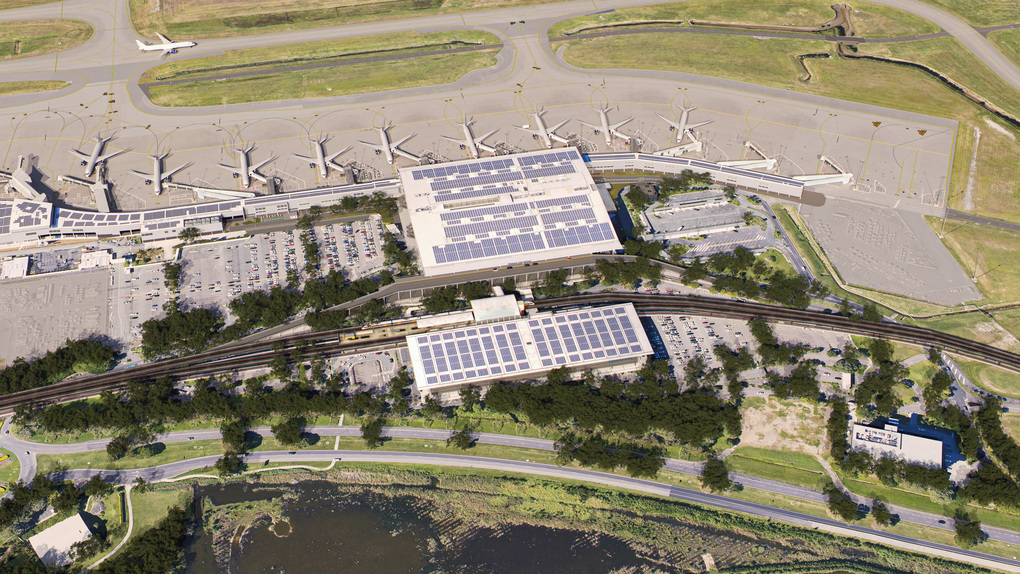
AUSTRALIA. Brisbane Airport today unveiled a spectacular animation revealing the dramatic revamp of its International Terminal as part of the A$5 billion (US$3.3 billion) ‘Future BNE’ transformation*.
Future BNE will include the most significant changes to the terminal since it opened 29 years ago.
“Our International Terminal is Queensland’s gateway to the world. After three decades of service, it’s well and truly time for a transformation, ensuring it’s ready to welcome the world for years to come. This building is worth billions of dollars to Queensland’s tourism economy and jobs every year,” said Brisbane Airport CEO Gert-Jan de Graaff.
Driven by the need to upgrade security screening equipment to meet Australian Government standards by the end of 2025, Brisbane Airport is undertaking major works across the terminal.
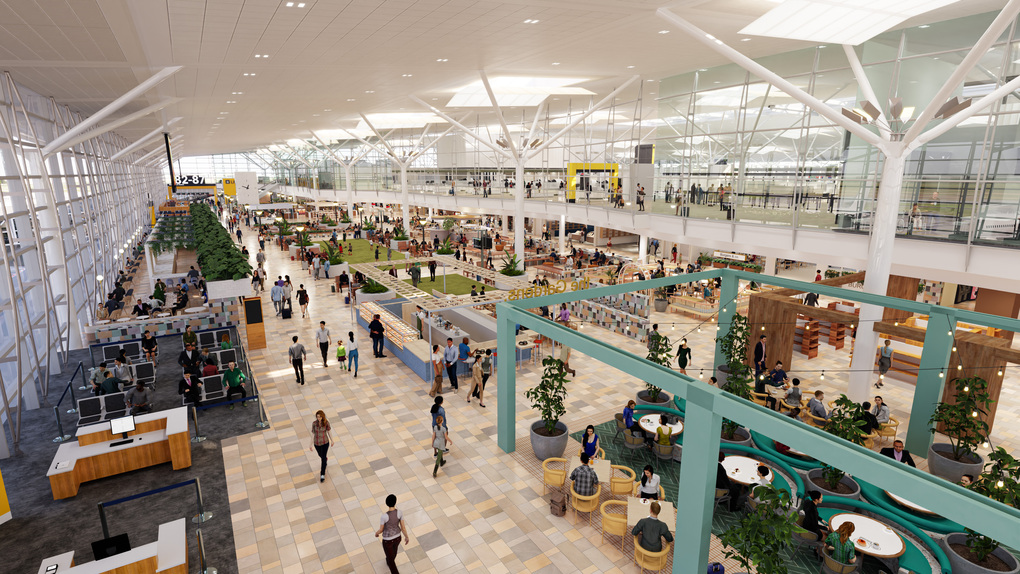
The International Terminal works are an integral part of the Future BNE transformation over the coming decade that includes upgrades to the Domestic Terminal, construction of Terminal 3, and extensive commercial, retail, and industrial projects across the precinct {look out for an extensive interview with Brisbane Airport Executive General Manager Commercial Martin Ryan and Head of Commercial Property Development Toby Innes later today}.
Retail and food & beverage will undergo a transformation with 31 premier retail opportunities created. And as reported, Brisbane Airport’s duty-free area is set to nearly double in size as part of the redevelopment.
As part of a renewed ten-year partnership with Lotte Duty Free (see our original feature here), the expansion will feature innovative design, a focus on local brands and sustainability, enhancing the shopping experience.
“Our aim is to bring the finest global offerings to Brisbane while showcasing the best of Queensland to the world,” de Graaff said.
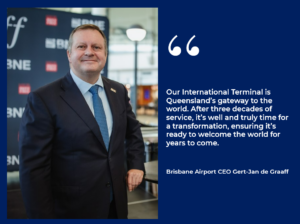
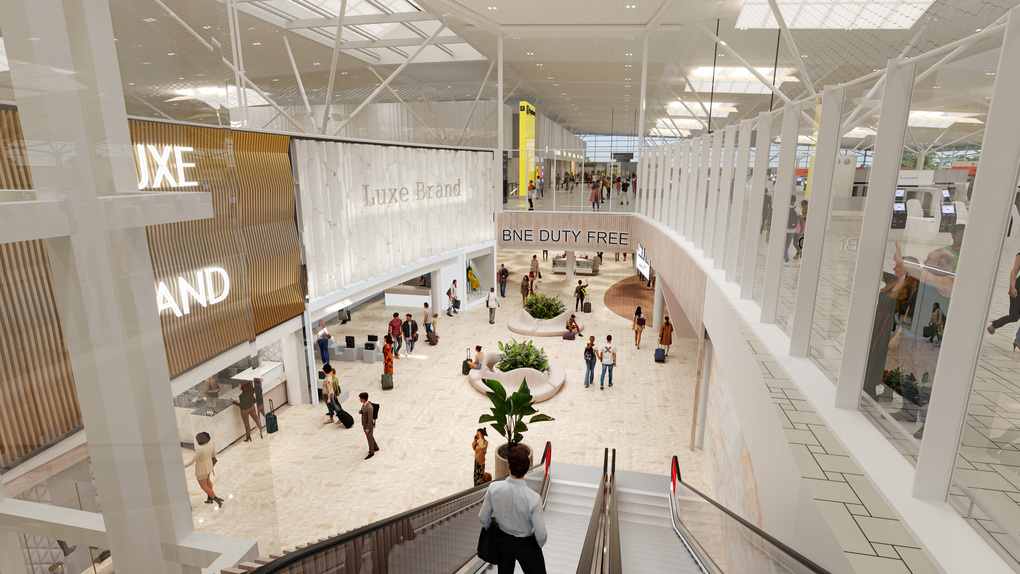

Switching levels – security moves up in the world
Currently, security screening and passport control at the International Terminal are in the windowless centre of the building on Level 3.
Soon, security will relocate to the light-filled atrium on Level 4, providing passengers and workers with a brighter naturally-lit space reflecting the Queensland experience.
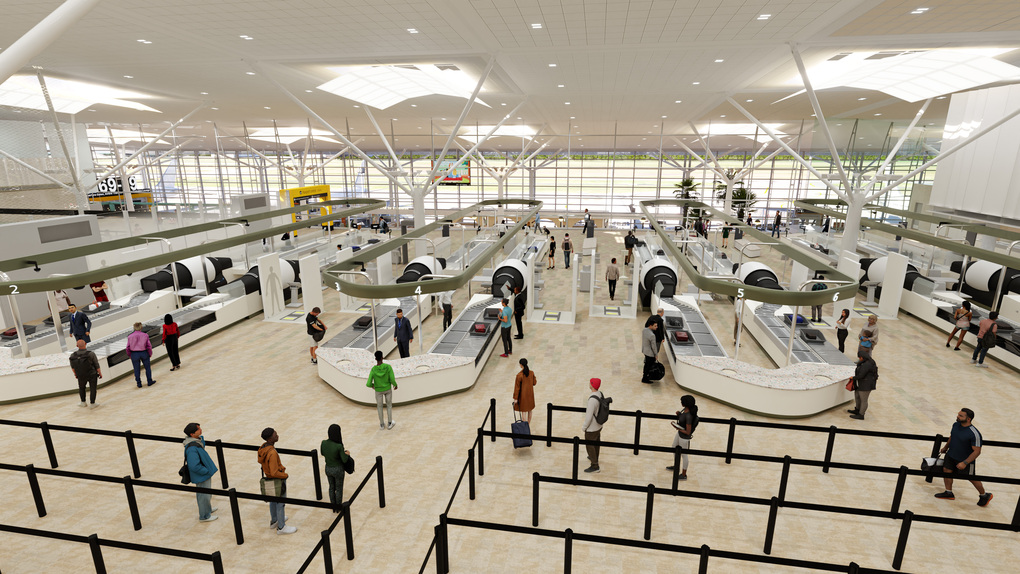
Advanced technology baggage and passenger screening
New next-generation Computed Tomography (CT) security screening equipment is being introduced for passengers and baggage. This new equipment is much larger and won’t fit into the existing security area, requiring its relocation to Level 4. Benefits of the new technology include:
Leave items in your bag: CT screening will allow passengers to leave items such as laptops in their bag and have other loose items screened with their cabin bag through the introduction of larger, deeper screening trays.
Less time in the queue: The new equipment will also increase the speed at which passengers will pass through the screening point.
Improved accuracy: CT screening equipment and the 3D images of bags deliver higher levels of accuracy and reduce the need to rescreen bags.
“Travellers will enjoy less hassle with the new screening system, by keeping laptops and other electronic items in their bags. It’s faster, smoother, and provides more accurate screening,” says de Graaff.
The same technology is being installed in the Domestic Terminal and is part of the single largest airport deployment of Rapiscan Systems in Southeast Asia and among one of the largest globally. It includes:
- 33 Rapiscan 920CT cabin baggage screening units
- 10 Rapiscan RTT 110 checked baggage and oversize screening units
- 41 Rapiscan 4DX Explosive Trade Detection units
- 33 Rohde & Schwarz Quick Personnel Security Body Scanners.
OSI Systems Chairman and CEO Deepak Chopra said about the Rapiscan contract: “We are honoured to be part of the biggest transformation in Brisbane Airport history and to strengthen our presence at international airports around the world.
“This transformative effort will have a significant and lasting impact on all passengers who travel through the airport, while increasing the standard of security for both passengers and employees.”
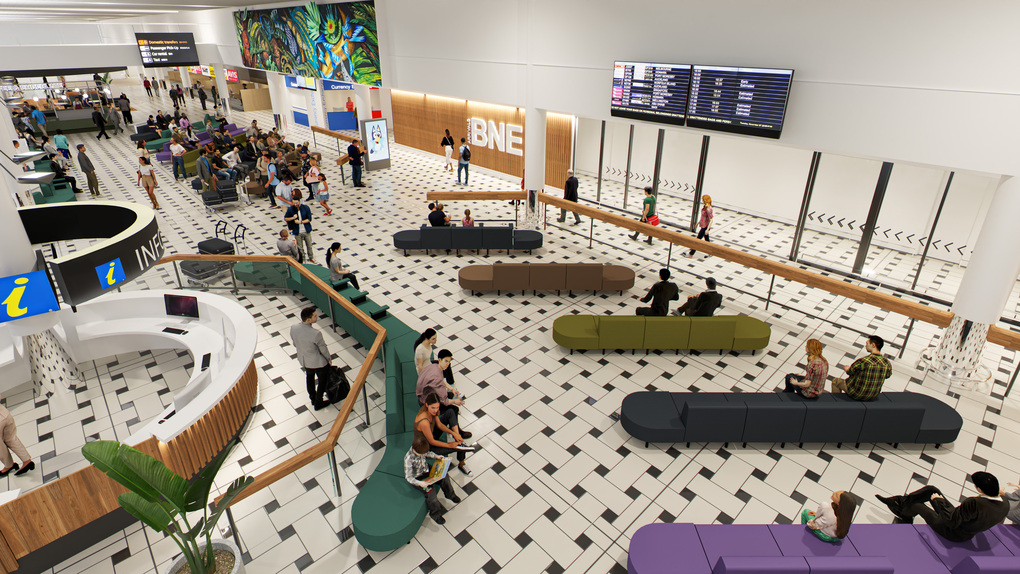
Self-service check-in kiosks and bag drop
From the moment travellers step into the upgraded International Terminal they will notice a difference with the introduction of advanced self-service technology at bag drop and check-in, from partner Amadeus.
The new technology enables Brisbane Airport to reduce queues, and passengers to choose between a smooth self-service or agent-led experience, powered by reliable technology that removes friction at check-in and bag drop.
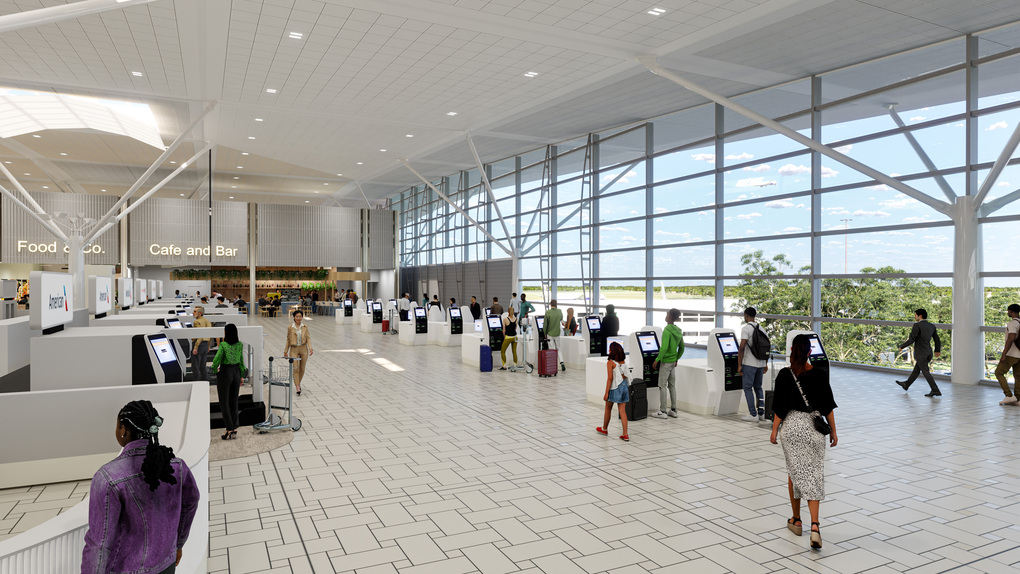
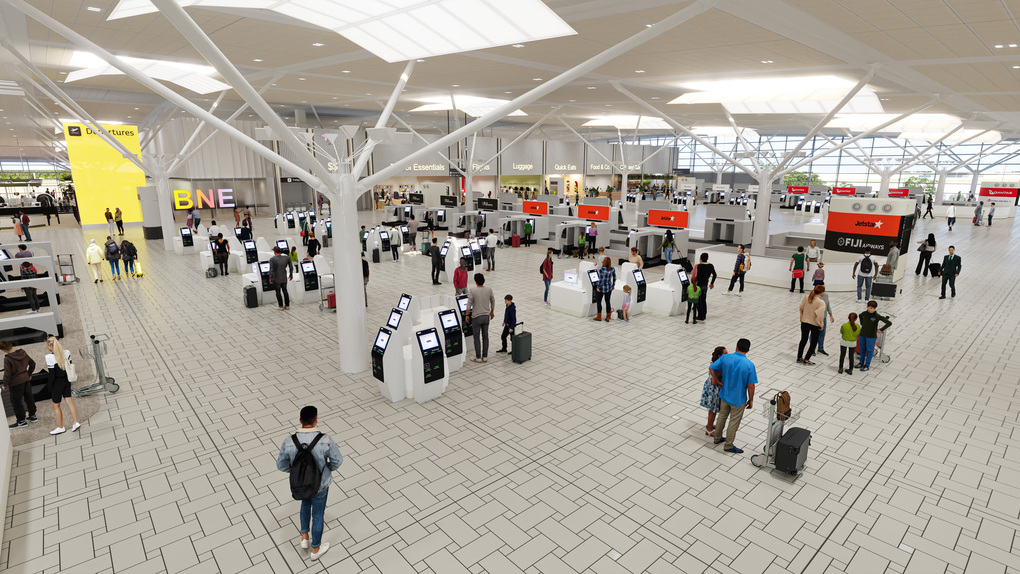
“The first new-generation check-in row is already up and running, and the feedback from travellers and airline staff has been fantastic. It’s a giant leap from the 1990s to now,” said de Graaff.
Amadeus Senior Vice President APAC, Airport & Airline Operations Sarah Samuel said: “Brisbane is a great example of an airport with a long-term transformation strategy that places the traveller at the heart of the experience, and we are delighted to support it with our technology.
“With flexible cloud infrastructure and advanced self-service options the technology foundations are being laid so Brisbane can offer passengers an outstanding experience for years to come.”
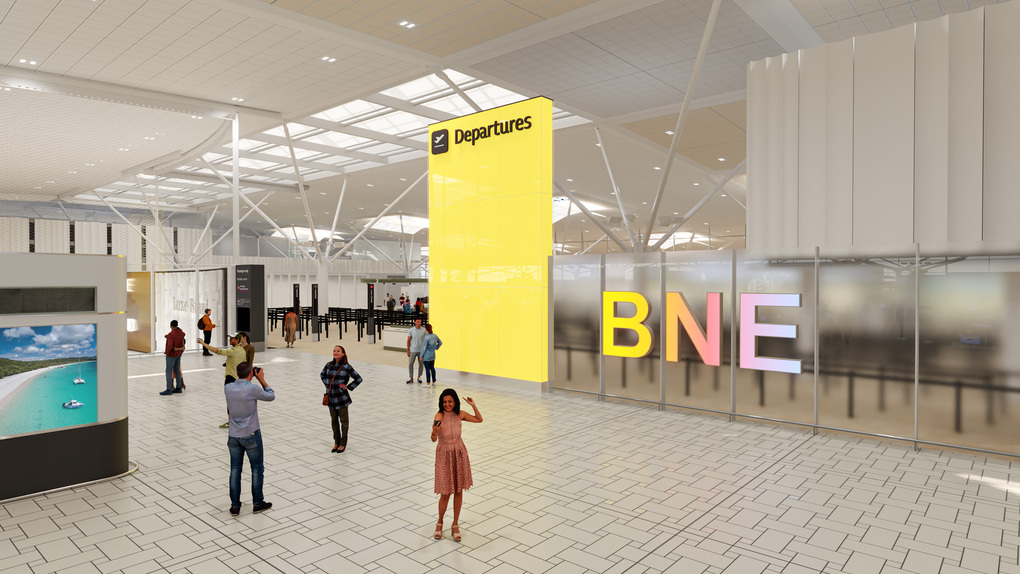
Baggage system improvements
Behind the scenes, staged construction is underway in the International Terminal baggage area on a steel frame mezzanine that will house a new, energy-efficient, “best-in-class” conveyor system and Standard 3 technology baggage security screening equipment.
This mezzanine level is being built above the existing baggage system to ensure continued operations and minimise the impact on operations during construction.
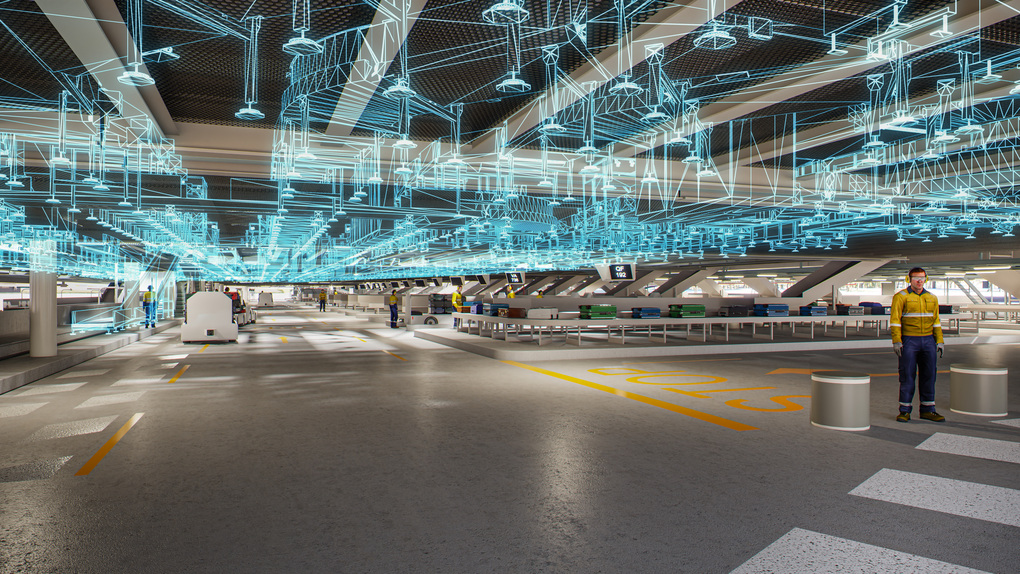
Power to vehicles servicing aircraft
The transformation of the International Terminal will also extend outside to the apron where a network of charging infrastructure tailored specifically to support ground support equipment (GSE) will be installed.
GSE at airports include pushback tugs, belt loaders, cargo loaders, and baggage tugs used to service aircraft.
“Not only will this convert vehicles from fossil fuels to sustainable sources, but it will also make the apron a quieter workplace for the hundreds of people who work loading and dispatching aircraft every day,” de Graaff explained.
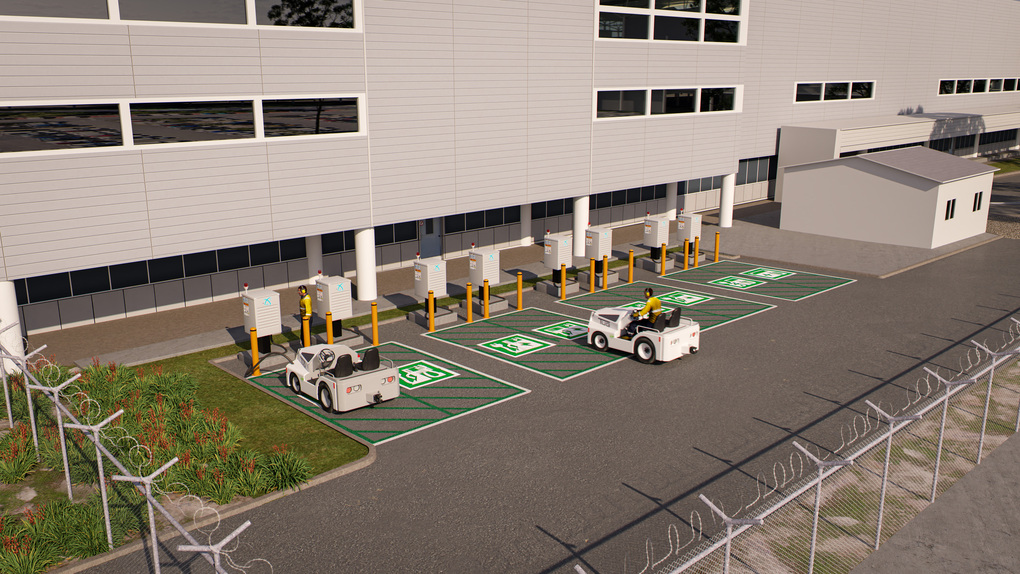
When things get tuff…
Innovative sustainable design features have been embedded into the project. This includes recycling a volcanic rock called Brisbane tuff. Initially quarried at Kangaroo Point from the 1880s, the material was used in the construction of Brisbane’s oldest buildings.
In 2015, Brisbane tuff was salvaged from demolition yards to create tiles installed into the International Terminal. With those tiles now requiring removal, they’re being crushed and reborn as reborn as terrazzo benchtops and furniture in the terminal.
“The use of Brisbane tuff, originally quarried from Kangaroo Point Cliffs and used in some of Brisbane’s oldest buildings, not only honours the original history of our city but also gives new life to these old and uniquely Queensland materials,” de Graaff observed.
Optimised Staging
Carefully optimised staging of the project will minimise the impact for passengers and airlines throughout construction which should conclude in 2027.
In FY24 the International Terminal welcomed 5.6 million passengers, up 39% on the previous year. In October American Airlines will commence services with direct flights to and from Dallas-Fort Worth, and in December Delta Air Lines will commence direct flights from Los Angeles.
A total of 110 million passengers have passed through the International Terminal since it opened almost three decades ago.
And coming next… Terminal 3
While the renovation of the International Terminal is the current focus, work also continues on planning for Terminal 3, Brisbane Airport said.
“We have begun planning for a Terminal 3 development, which will be conveniently located between our two parallel runways. Eventually, we will integrate domestic and international passengers into this new facility,” de Graaff explained.
“We need to determine whether this integration will happen from day one or in stages. What we know for sure is that sustainability and accessibility will be baked into the design of Terminal 3.” ✈
*The future is nowThis article forms part of an ongoing series by The Moodie Davitt Report dedicated to Future BNE. As reported, the programme, which includes over 150 projects, is the biggest in Brisbane Airport’s history. Future BNE will upgrade both the Domestic and International terminals and continue the development of a new Terminal 3 precinct as both Brisbane and Queensland look forward to hosting the 2032 Summer Olympics and Paralympics. In a unique eight-year editorial programme, we will track the development right through to the Games themselves. The Moodie Davitt Report Founder & Chairman Martin Moodie visited Brisbane Airport recently to kick-start the series by reporting on the new ten-year partnership between Lotte Duty Free and Brisbane Airport Corporation. You can read that story here. Look out for more coverage of the ongoing developments coming soon. |










